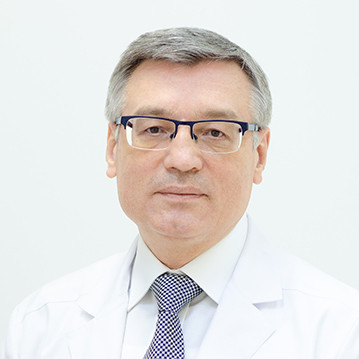
What is prostate cancer
Prostate cancer, or prostate cancer (PC) is a rapidly growing oncological disease of older men, the increase of which, according to some reports, was more than 500% (!) compared to the early 90s. Such a surge, first of all, is associated with the widespread introduction of a program for the early detection of this pathology.
On the other hand, prostate cancer has a clear correlation with age: the risk of developing a malignant tumor in the prostate gland is significantly higher in men over 65 years of age compared to men of 50 years of age. Considering that life expectancy, especially in developed countries, is noticeably increasing, this factor can also be considered the reason for the increase in the incidence of prostate cancer.
Prostate cancer ranks first among all malignant neoplasms in the male population, therefore, today great attention is paid to the treatment of prostate cancer: surgical approaches are being reviewed, minimally invasive techniques for operations on tumors are being developed, radiation therapy is being improved (including contact brachytherapy), new drugs are being developed for drug treatment.
Prostate cancer develops due to mutations in prostate cells. These mutations can cause uncontrolled division and tumor formation.
Causes of prostate cancer
The causes of mutations in cells that cause prostate cancer and other oncological diseases have not yet been fully elucidated. But there are some risk factors that increase the chance of developing a tumor.
The main cause of prostate cancer can be called age. The longer the life expectancy of a man, the longer androgens - male sex hormones - have a stimulating effect on prostate tissue. It is this, according to modern data, that predisposes to the development of a malignant tumor in the prostate, and the system of drug treatment is built on the same theory, the main direction of which is hormone therapy.
The following can also contribute to the appearance and growth of malignant cells in the prostate:
- overweight;
- prostatic hyperplasia, chronic prostatitis and other inflammatory diseases and conditions of the prostate;
- injuries;
- prostate adenomas;
- Fatty diet
Heredity plays a big role in the occurrence of prostate cancer. It has been established that a malignant tumor is much more common in men whose closest relatives have also been diagnosed with prostate cancer.
Prostate cancer stages
- Stage 1 - the tumor is not aggressive, has a small size and is located within the prostate gland;
- Stage 2 - the tumor is enlarged, but still affects only the tissues of the prostate;
- Stage 3 - prostate cancer begins to spread beyond the prostate gland and affect the seminal vesicles and other adjacent tissues and organs;
- Stage 4 - a malignant tumor captures the bladder, affects the lymph nodes and metastasizes to other organs (for example, the lungs) and tissues (bone).
Terminal stage IV prostate cancer is difficult to treat and has a poor prognosis.
Types of prostate cancer
The most common prostate cancer is adenocarcinoma. This tumor develops from the glandular cells of the organ. There are also rarer forms of cancer, such as neuroendocrine, small cell carcinoma, sarcoma, and transitional cell carcinoma of the prostate.
Prevention of prostate cancer
Ways to prevent this oncological disease have not yet been precisely determined. There is evidence that the risk of prostate cancer reduces the use of tomatoes. But this issue has not been sufficiently studied. However, to improve the prognosis and facilitate the treatment of the tumor, regular examination by a urologist helps to detect prostate cancer in the early stages. The most widely available test is the prostate-specific antigen (PSA) test. This is a tumor marker that enters the blood due to damage to the blood vessels of the prostate gland and normally should not exceed 4 ng / ml. Higher values may indicate both a malignant process in this organ and other prostate diseases (for example, adenoma).
Prostate cancer symptoms
Difficulties in early detection of prostate cancer are associated with its asymptomatic course in the early stages. The appearance of clinical signs of the disease, as a rule, indicates a running process. All signs of prostate cancer can be divided into two groups: symptoms of a local tumor and symptoms of metastases. Unfortunately, they are very similar to the symptoms of other diseases of the male genitourinary system.
Patients with prostate cancer may experience the following:
- difficulty urinating;
- frequent urination in small portions (especially at night);
- burning and pain when urinating;
- discomfort in the pelvic area;
- blood in the urine.
These symptoms are more often signs of prostatic hyperplasia. She is of good quality. But to exclude the risk of oncology, it is necessary to be examined by a doctor.
In some cases, the patient suffers more from manifestations of prostate cancer metastases than from the main symptoms of the disease, for example, in the later stages, the following may appear:
- pain in bones affected by metastases (often the lower back and pelvic bones);
- pain with compression of the spinal cord;
- bladder dysfunction;
- rectal dysfunction;
- swelling of the legs due to compression of the veins and damage to the lymph nodes;
- enlarged regional lymph nodes;
- back pain;
- weight loss, fatigue and drowsiness, intestinal bleeding.


































